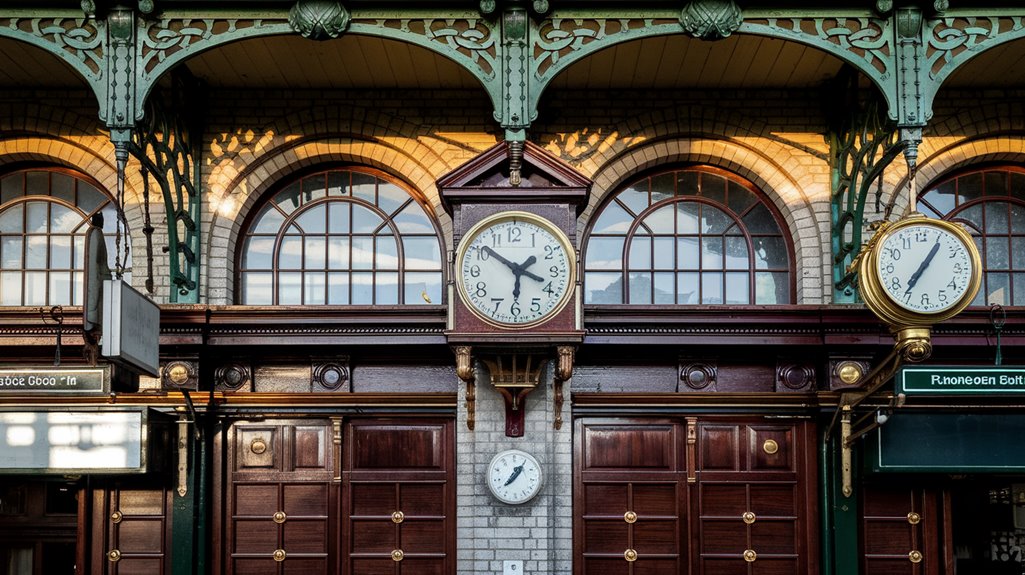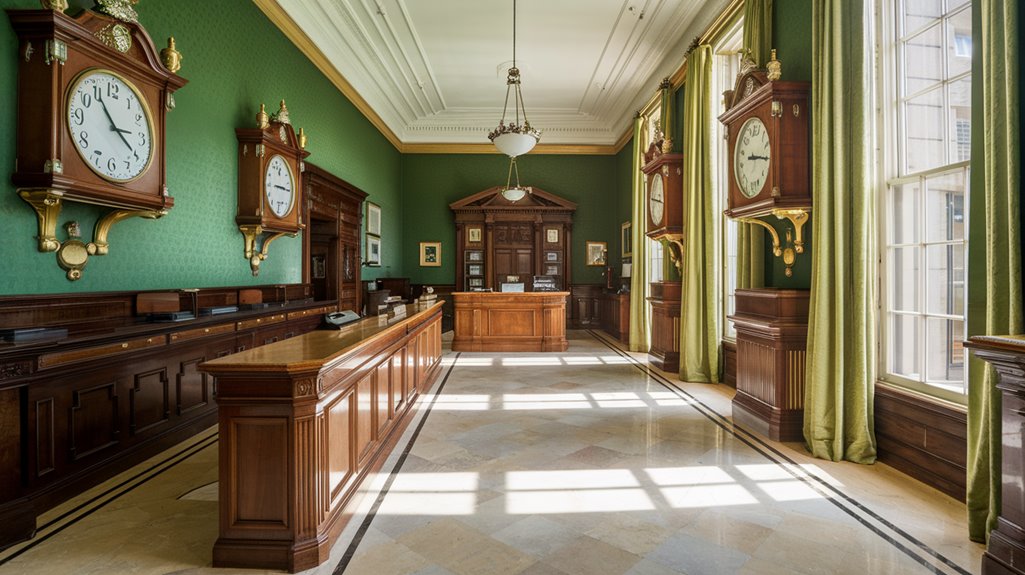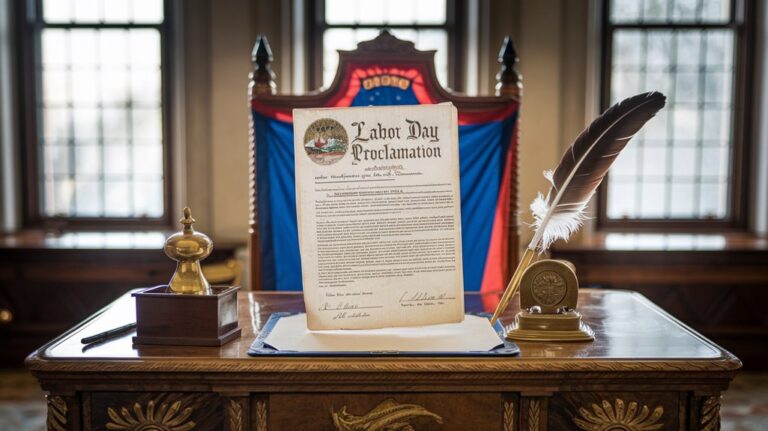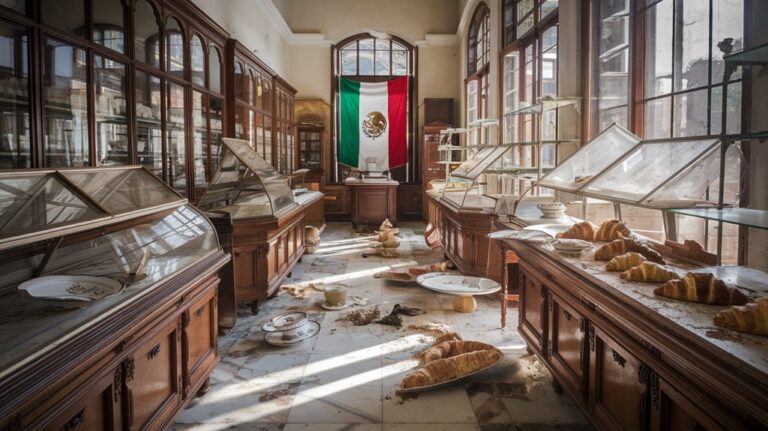Ireland Used Its Own Time Zone for Over Three Decades
Imagine you're a Dublin merchant in 1880, and you've just received word that your watches must be set back 25 minutes and 21 seconds to align with the new Dublin Mean Time. You'd be among the first to experience Ireland's bold move toward temporal independence from Britain. While this unique time zone might seem like a minor detail of history, it reflects a fascinating period when Ireland asserted its identity through the very measurement of time itself.
The Birth of Dublin Mean Time

Before Dublin Mean Time's establishment in 1880, you'd find nearly every Irish town running on its own local time based on the sun's position. This fragmented timekeeping system created significant confusion, especially as Ireland's economy and industry grew during the Industrial Revolution.
The solution came through the Statutes (Definition of Time) Act of 1880, which established Dublin Mean Time using the Dunsink Observatory as its reference point. This new standardized time was set 25 minutes and 21 seconds behind Greenwich Mean Time. Much like how Christ Church Cathedral served as a central reference point for religious life in Dublin, the Dunsink Observatory became the focal point for timekeeping.
The change marked a dramatic shift from traditional local timekeeping practices, where each district relied solely on solar observations. You can imagine the impact: for the first time, Ireland had a unified time system, though it remained distinct from Britain's, reflecting the country's separate identity while modernizing its timekeeping approach. The growing pressure from business lobbyists ultimately played a crucial role in pushing for these time standardization efforts.
Life Under a Unique Time Zone
While Dublin Mean Time set Ireland apart from Britain for 36 years, it shaped daily life in unique ways you wouldn't find anywhere else.
If you'd lived in Ireland during this period, you'd have noticed how the 25-minute time difference affected everything from business operations to social gatherings. The cultural adaptations were particularly evident in cities like Dublin, where daily routines had to account for this distinct time zone that aligned more closely with local solar time. The country's status as an English colony during this period made the time zone difference even more significant.
Before 1880, Ireland followed local mean time exclusively, marking its temporal independence from British influence.
You'd have experienced this temporal independence most significantly when traveling between Ireland and Britain, as you'd need to reset your watch by almost half an hour.
The Dunsink Observatory's influence on Irish time created a subtle yet meaningful expression of Ireland's distinct identity, even as economic ties with Britain remained strong.
Economic Challenges and Business Pressure
Ireland's shift from Dublin Mean Time marked more than just a change in timekeeping – it reflected the nation's growing need to align with global economic forces.
You can see this same pattern of economic adaptation playing out in modern Ireland, where globalization impact continues to shape the nation's destiny.
Today's Irish economy relies heavily on international integration, much like it did when standardizing its time zone.
The country's economic recovery after the 2007-09 financial crisis demonstrates this dependency, with foreign investment and export-focused industries driving growth. The banking system remains resilient despite ongoing market challenges.
You'll find multinational companies headquartered in Ireland contributing considerably to its GDP, which reached impressive growth rates of 13.5% in 2021.
However, this international reliance also makes Ireland vulnerable to global trade tensions and geopolitical risks. The financial crisis severely impacted the nation as unemployment rose from under 5% in 2007 to nearly 16% by 2011.
The Historic Switch to GMT
During the autumn of 1916, a pivotal change swept across Ireland as the nation abandoned its traditional Dublin Mean Time in favor of Greenwich Mean Time (GMT).
The historical significance of this switch marked the end of Ireland's unique time standard, which had been set by the Dunsink Observatory and ran 25 minutes and 21 seconds behind GMT.
On October 1, 1916, you would've witnessed a remarkable time synchronization as Irish clocks moved back 35 minutes instead of the usual hour when daylight saving time ended. The Time (Ireland) Act of 1916 formally established this Western European Time standard.
This adjustment wasn't just about convenience—it reflected growing economic ties between Ireland and Britain. The change streamlined travel, business operations, and communications between the two nations.
It's a shift that continues to influence Ireland today, as the country follows GMT in winter and GMT+1 in summer.
Legacy and Modern Timekeeping in Ireland

Since adopting GMT in 1916, Ireland's timekeeping has evolved into a well-structured system that you'll find operating on two primary settings: Irish Standard Time (IST) in summer and GMT in winter.
The change marked a significant shift from the country's distinct time identity, as you'd previously know Ireland by its Dublin Mean Time, which ran 25 minutes behind GMT. Local councils and politicians strongly opposed this shift to GMT when it was implemented.
While some viewed the change as a loss of cultural identity, it's brought practical benefits through time synchronization with other European nations. The modernization of Ireland's time system helped prevent integration issues with neighboring countries and international business operations.
Today, you'll see Ireland changing its clocks in harmony with the rest of Europe, switching between summer and winter time on the last Sunday of March and October.
This coordination has proven essential for modern business, communication, and maintaining consistency with Northern Ireland.










